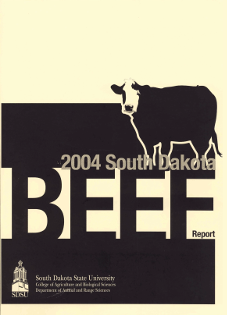Document Type
Report
Report Number
2004-16
Publication Date
2004
Summary
To evaluate the potential for steak production from beef chuck muscles, we evaluated intramuscular tenderness variation within four beef chuck muscles: infraspinatus (IF), supraspinatus (SS), triceps brachii (TB), and serratus ventralis (SV). The IF, SS, TB, and SV muscles were cut into 1-in-thick steaks perpendicular to the long axis of the muscle. An identification tag was placed on each steak consisting of a muscle identification number, steak number, and orientation of the steak. Steaks were vacuum-packaged and stored at -8° F until used. Steaks were thawed at 34° F and broiled on electric broilers to an internal temperature of 160° F (medium degree of doneness). One core was removed from each square inch section parallel to the muscle fiber and sheared once to determine Warner Bratzler shear (WBS) force. The SS had an overall WBS force mean of 11.97 lb with no tenderness difference (P > 0.05) among steak locations. The IF had an overall WBS force mean of 6.97 lb with no tenderness difference (P > 0.05) among steak locations. The SV had a mean WBS force value of 9.64 lb with significant tenderness variation among steak locations. These tenderness variations were dispersed throughout the SV in no particular pattern. The TB had a mean WBS force value of 9.08 lb with significant tenderness variation among steak locations. The TB had lower (P < 0.05) shear force in the middle region of the muscle with the distal and proximal ends being tougher (P < 0.05). The data presented in this study provides a reasonably detailed mapping of the tenderness regions within the IF, SS, TB, and SV muscles. This information could be utilized to add value to the beef chuck through alternative fabrication and marketing of the muscles to fabricate steaks from consistently tender regions.
Number of Pages
8
Format
application/pdf
Language
en
Publisher
South Dakota State University
Rights
Copyright © 2004 South Dakota State University
Recommended Citation
Searls, Gina A.; Maddock, Robert J.; and Wulf, Duane M., "Intramuscular Tenderness Variation Within Four Muscles of the Beef Chuck" (2004). South Dakota Beef Report, 2004. 17.
https://openprairie.sdstate.edu/sd_beefreport_2004/17

